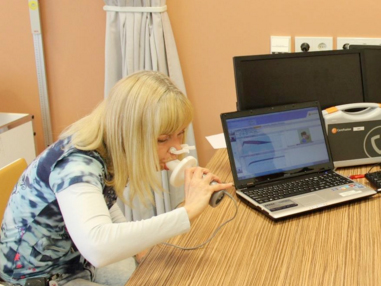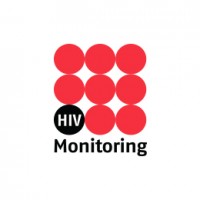
Information about the study visit
The AGEhIV study visits
AGEhIV study participants are invited for a study visit once every two years at the HIV outpatient clinic at the AMC or at the research department of the GGD Amsterdam. A study visit takes approximately 1,5 – 2 hours to complete. During a study visit the following research activities are carried out:
Questions about health and comorbidities
Together with the research nurse the participants will go through a questionnaire. The questionnaire involves questions regarding the prevalence of various comorbidities, such as heart disease, cancer or lung disease. In addition, the prevalence of several risk factors and the extent to which the participant has made use of health care will be evaluated.
Blood pressure measurement
During a study visit, blood pressure is measured three times while being seated.
Electrocardiography (ECG or EKG)
An electrocardiograph is used to record the electrical activity of the heart using electrodes placed on the skin of the chest, arms and legs. The electrodes detect electrical changes on the skin that are causes by the electrical activity of the heart muscle. The electrical activity is translated to several lines on a sheet of paper and can then provide information about the functioning of the heart.
Arteriograph: measurement of the arterial stiffness
The Arteriograph is used to measure the arterial stiffness. This measurement takes place in supine position (laying down). A cuff is placed around the upper arm, and measures the arterial stiffness. The measurement is similar to a blood pressure measurement and takes approximately 5 to 10 minutes. It is carried out at least three times in order to obtain a reliable arterial stiffness measurement. Increased arterial stiffness is a risk factor for cardiovascular disease.
Frailty test
The “frailty test” (Fried’s frailty phenotype) includes questions and measurements regarding weight loss, grip strength, and gait speed. These measurements are used to indicate whether an individual is “frail”. Frailty is associated with an increased risk of falling, hospitalizations and death.
Grip strength measurement

Spirometry (pulmonary function test)

Spirometry measures lung function, specifically the amount and speed of air that can be inhaled and exhaled. The test consists of two parts. During the first part of the test, the participant is asked to inhale as deep as possible, and then exhale into the sensor as strong and as long as possible. During the second part of the test, the maximum volume of air present in the lungs is measured. The combination of the two tests results is an estimation of the lung function.
Spirometry
Bone mineral density scan
A bone mineral density scan (or DEXA scan) is performed at the department of nuclear medicine. During this measurement, the density of the bone is measured at various locations of the body, being the lumbar spine (lower back), the femoral neck (upper leg bone) and the complete hip. A decrease in bone mineral density (osteoporosis) increases the risk of a fracture. During the fifth study visit an additional measurement of the entire body is conducted (Whole body DEXA scan), but only if the participant has specifically provided consent for this measurement. This measurement determines the ratio between fat and muscle tissue in the body. The results of this measurement have no consequences for the participant and is only conducted for research purposes.
Blood, urine and stool samples
During the study visit blood, urine and stool samples are collected. Immediately after the study visit, extensive laboratory tests are performed on the blood and urine samples. The stool samples, and part of the blood and urine samples, are stored for future research.
Questionnaire
We ask each participant to complete a questionnaire prior to or after the study visit. This questionnaire is of major importance. It greatly contributes to investigating the occurrence of comorbidities and risk factors. This data is crucial to answering one of the main research question of the study: do comorbidities occur more frequently in people living with HIV than in people without HIV?



